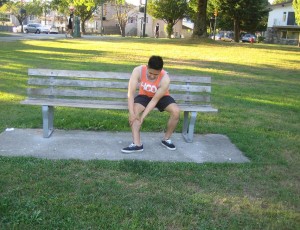Bone spurs are described as bony growths that can develop along the edges of bones and do not always cause pain. On the other hand, once they form on the joints that rub against each other such as in the foot or the spine, they place unwanted pressure on the nerves which results to pain and discomfort. This typically occurs while exercising since there is more pressure placed on the bones.
What are the potential complications of bone spurs?
Bone spurs can aggravate a condition since they are most often the result of another condition. Once the ligaments are worn down due to osteoarthritis, the body attempts to repair itself by growing the bone spurs.
Other conditions that can trigger the development of bone spurs include spinal stenosis which involves degeneration of the disks in the spine. Plantar fasciitis develops on the connective tissue in the heel and the foot is irritated which leads to the development of a bone spur. Remember that these conditions can limit movement which makes it more difficult to exercise and might require low-impact activities such as walking, cycling, swimming or using an elliptical machine.

Diagnosis
If the individual experiences nerve pain that might be linked to a bone spur, a doctor should be consulted. Physical examination and imaging tests might be required to test for bone spurs.
When diagnosed with a bone spur, a doctor should be consulted if it might be due to other complicating factors. The individual should consult the doctor if this can affect how he/she exercises. If bone spurs develop in the knee which indicates osteoarthritis, there is a need to reassess high impact activities that place substantial strain on the joints.
Treatment
Once the individual experiences the symptoms of bone spurs, he/she must take a short period of rest from exercise to alleviate the pressure and inflammation on the affected area. It is recommended to take 1-2 weeks break from exercise.
During this period, the individual can take anti-inflammatory medications and apply an ice pack at least 3 times a day for 10-15 minutes. It is also vital to perform mild exercises to maintain flexibility. The individual should warm-up with a 5-minute walk and then stretch out the major muscle groups with emphasis on the affected area. This helps reduce the degree in which the bone spur compresses the nerve.
Considerations to bear in mind
Oftentimes, bone spurs can break off from the bone and travel to the joint lining. Once these embed, the individual can experience locking of the joint during exercises such as elbow or knee locking. Remember that this can be dangerous during exercise because once the joint locks while lifting weights, playing field or using a treadmill, the individual is at risk for injury. Once this symptom is experienced, a doctor should be consulted as soon as possible for further assessment.
